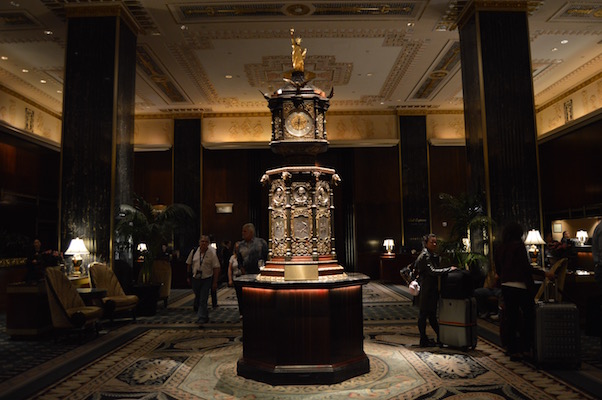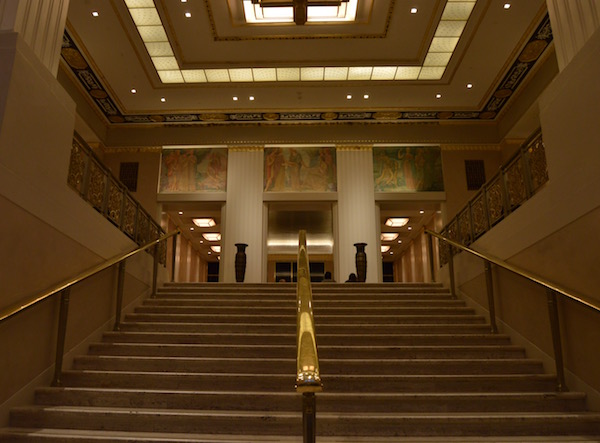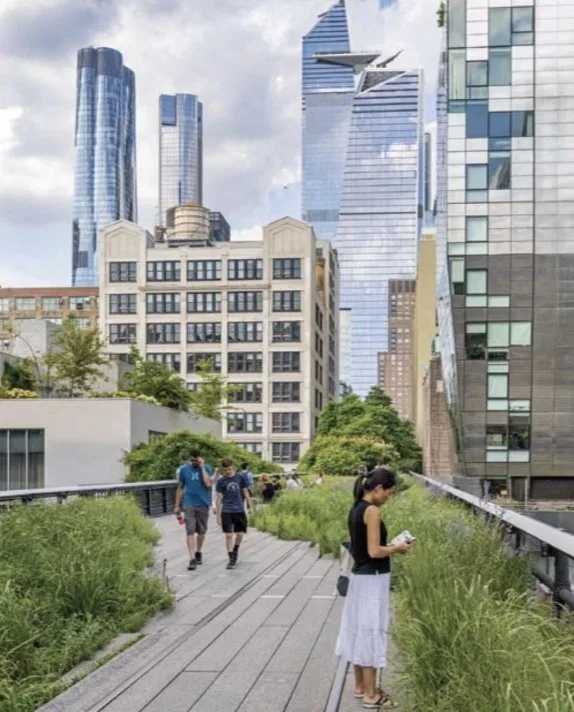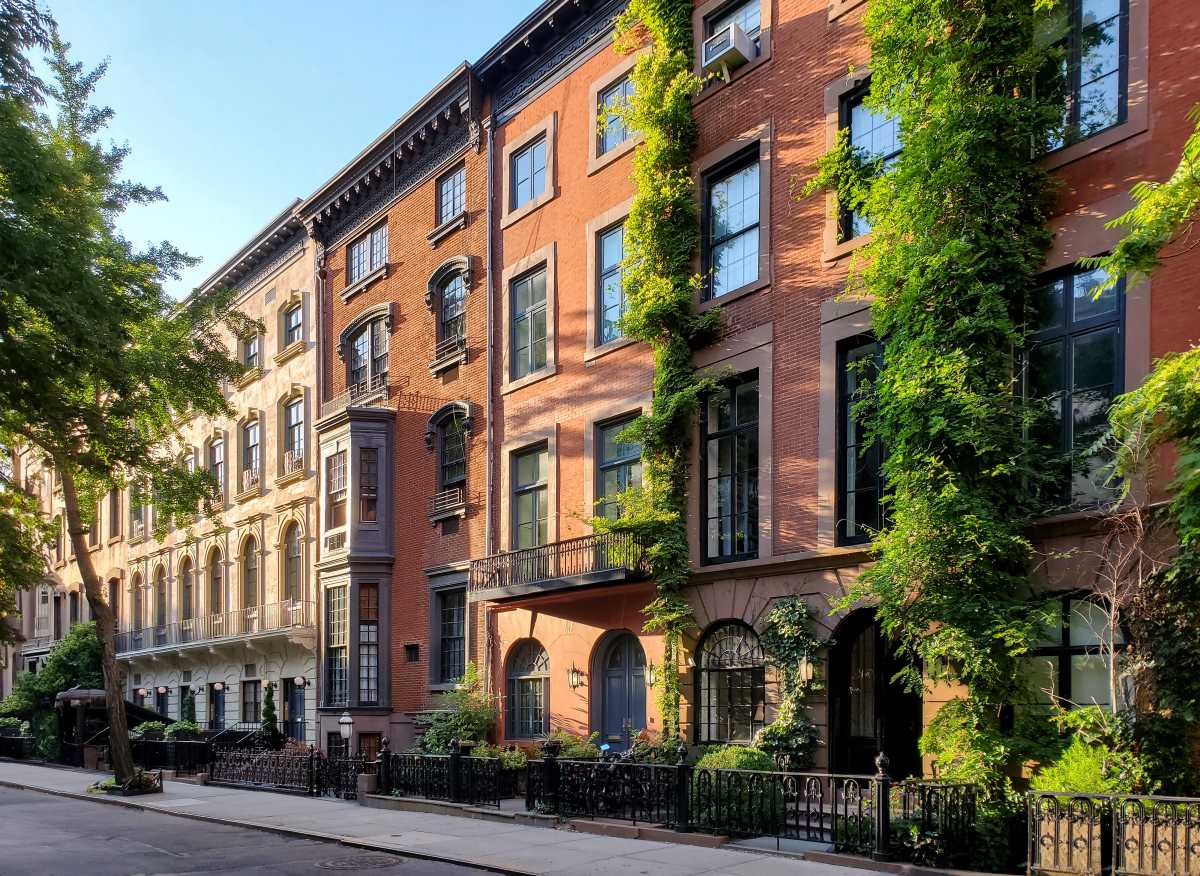
BY JACKSON CHEN | The Waldorf Astoria is now a protected landmark, inside and out, as the Landmarks Preservation Commission unanimously approved several of the hotel’s hallways and ballrooms as its 119th interior landmark on March 7.
On top of a 1993 landmark designation protecting the exterior of the famed Art Deco hotel, the LPC’s new decision now confers landmark status on spaces from the building’s ground to third floors. The first floor’s lobbies, the Park Avenue Lobby and the Main Lobby, are included under the designation, as are the Silver Gallery, the Grand Ballroom, the Basildon Room, the Jade Room, and the Astor Gallery on the third floor.
“The Waldorf Astoria Hotel has some of the most internationally renowned rooms in all of New York City,” the LPC’s chair, Meenakshi Srinivasan, said in a written statement. “Today’s action not only protects the rich and beautifully detailed Art Deco features of the hotel’s interior public spaces, it also preserves the unique experience of moving through the hotel’s varied interiors, which countless New Yorkers and visitors have enjoyed for more than eight decades.”
Built with lavish interiors in 1931, the hotel has since hosted innumerable world leaders as well as American presidents on their visits to New York. Given the historical and cultural significance of the Waldorf, many New Yorkers assumed the hotel’s interiors were already protected. But when the Chinese insurance group Anbang bought the property in 2014, landmark advocates rang the bell to secure the hotel interiors’ future.
Despite initial rocky relations between Anbang and preservationists, the insurance giant soon came around to cooperating with the LPC and landmarking advocates in charting a course to preserve the hotel’s unique architectural gems during what is expected to be a major makeover of the building.
“Anbang knows the Waldorf Astoria’s history is a large part of what makes this hotel so unforgettable,” the company said in a statement. “That is why we fully supported the Commission’s recommendations for designation of the Waldorf Astoria’s most important public spaces and applaud the Commission on achieving landmark status for them.”
The company added that it was fitting that the Waldorf received the most extensive interior designation of any private building in New York City because of its “unparalleled history and beautiful, irreplaceable features.”

The designation came as welcome news for the New York Landmarks Conservancy, which first sounded the alarms after Anbang’s purchase in 2014. After initial reports surfaced that the company intended to do gut renovations of the hotel, the conservancy reached out to the LPC to look into landmarking the Waldorf’s interiors before any construction began.
“We were the ones who led the public effort to designate the Waldorf,” said Glen Umberger, the conservancy’s manager of special projects. “We are thrilled beyond belief that it’s finally a finished designation.”
Umberger said there were additional spaces that he would like to have seen landmarked, including the 18th floor Starlight Roof, an elevator lobby on the Lexington Avenue side, and some areas connected to the main lobby. The conservancy, however, is thrilled that the LPC designated most of the areas under discussion.
Umberger and his group worked on a similar hotel interiors designation with the nearby Plaza Hotel at 768 Fifth Avenue, just below Central Park, in 2004. He noted that in the case of the Waldorf, the advocates’ efforts were facilitated by having the support of the owner, Anbang.
“We’re fortunate that the owners have been supportive of the designation process,” Umberger said. “That’s not always the case. When the owners understand that they have an architectural gem on their hands and they’re willing to work with the LPC and other organizations like us to landmark it, that’s always a good thing.”




































